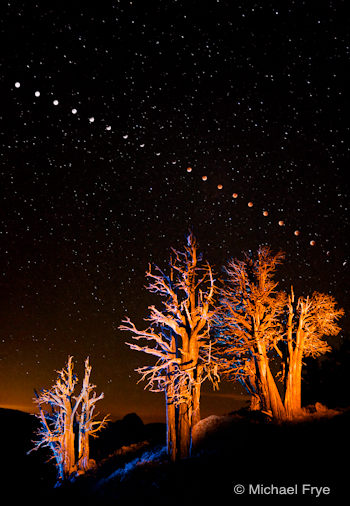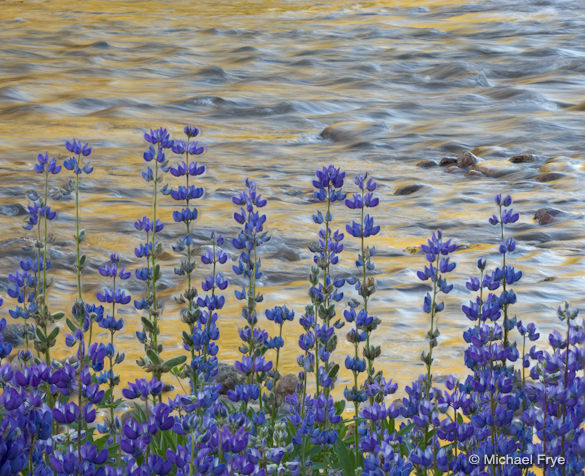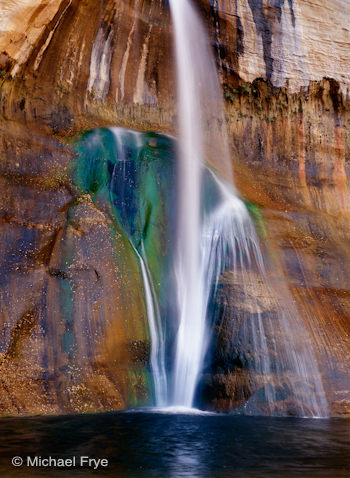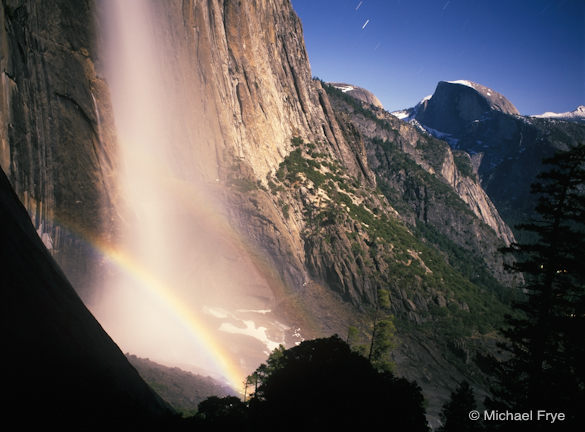Photography Tips
by Michael Frye | Dec 22, 2010 | Digital Darkroom, Photography Tips, Video Tutorials
White Balance for Landscape Photographs – Part 2: Shade from Michael Frye on Vimeo.
Here’s the second part of my video series on white balance. Today it’s all about shade—finding the perfect color temperature that brings out all the hues when there’s no sunlight in your photograph.
If you haven’t seen it already, here’s a link to Part 1. Still to come is Part 3, where I’ll present solutions to a common problem in landscape photographs—finding the right white balance when mixing low-angle sunlight with blue sky.
To see this video clearly, be sure that “HD” is on (the letters “HD” should be white instead of gray; if not, click on them), and click the “expand” icon just to the right of “HD.”
These videos are a great way to explain concepts like white balance, but if you want to put all the bits and pieces together and really master the digital darkroom, there’s still space available in my upcoming Photoshop and Digital Printing workshop, January 16-20.
Hope you find this video helpful, and I look forward to hearing your comments!
by Michael Frye | Dec 17, 2010 | Advanced Techniques, Photography Tips

Lunar Eclipse Sequence, 1:23 a.m. to 4:49 a.m., August 28, 2007
Before getting to the topic at hand, I want to thank all of you for your support in launching my new eBook, Light & Land. The first day’s sales were amazing, off the charts, so thanks to all of you who bought a copy. And if you haven’t purchased it yet, there’s still time to get 20 percent off. See my last post for details.
So on to the eclipse… I was honored to have this lunar eclipse photo recently selected for the Natural World Exhibit at the Center for Fine Art Photography in Fort Collins Colorado. By coincidence, there will be another full lunar eclipse Monday Night—an opportunity to try making your own eclipse photograph.
Now here in California there are lots of dire weather forecasts for the next few days, with predictions of five to ten feet of snow above 7000 feet in the Sierra Nevada, and five to ten inches of rain in the foothills and Yosemite Valley. Minor flooding is possible. So there’s a good chance that we won’t see Monday night’s eclipse at all. But you never know—all it takes is a small break in the clouds. And those of you in other parts of the world may have perfect weather for this event. To see where and when the eclipse will be visible (weather permitting), visit the NASA web site. (more…)
by Michael Frye | Dec 10, 2010 | Digital Darkroom, Photography Tips, Video Tutorials
White Balance for Landscape Photographs – Part 1: Sunlight from Michael Frye on Vimeo.
My recent critique of Mark Wilburn’s dogwood photograph prompted a lively discussion about white balance, so this seemed like a good topic for a more in-depth treatment. I’ve created three videos on white balance for landscape photographs, and here’s part one, which looks at images with sunlight, including sunrises and sunsets. Part two will discuss photographs captured in the shade, and part three will present solutions to a common problem in landscape photographs—finding the right white balance when mixing low-angle sunlight with blue sky.
In all of these videos I discuss what I think is the key to setting color temperature—finding a good balance between warm and cool colors, and preserving the vibrance of all the individual hues.
To see this video clearly, be sure that “HD” is on (the letters “HD” should be white instead of gray; if not, click on them), and click the “expand” icon just to the right of “HD.” Once you’ve expanded you might want to turn Scaling off if you have a big monitor.
As I mentioned yesterday, my new eBook will discuss my entire workflow in depth. I’ll post more details soon.
by Michael Frye | Aug 20, 2010 | Photography Tips

Lupine and reflections along the Tuolumne River
On Tuesday Claudia and I headed up to Tioga Pass. We planned to photograph flowers below Mt. Dana, but when we arrived at the pass the wind was gusting—not good for flower photography. After some indecision we drove toward White Wolf, but then Claudia remembered seeing some nice patches of lupine along the Tuolumne River near Lembert Dome two weeks ago, so we decided to stop and see if they were still blooming.
They were—in fact they were in great shape, and the wind was relatively calm. We found a spot with a thick patch of lupine in the foreground and Lembert Dome in the distance, and stayed until sunset taking photos. (more…)
by Michael Frye | Jun 9, 2010 | Photography Tips
Vertical composition of Lower Calf Creek Fall, Utah, with the waterfall centered
Two weeks ago I wrote about workflow. Today I’m going to talk about composition. But vision, technique, and the digital darkroom are all vital aspects of landscape photography, and I want to explore every relevant topic in this blog. I hope I can make the concepts, whether technical or creative, clear and easy to understand.
As a beginning photographer I almost always held the camera horizontally. Not only is the camera designed this way, it’s also the most natural way to see, since our eyes are lined up side-by-side on our heads. But the camera only has one lens—one eye—and “sees” just as well in an upright position. I missed a lot of good compositions in those early days because I didn’t think to turn the camera sideways. (more…)
by Michael Frye | Apr 25, 2010 | Advanced Techniques, Photography Tips
Half Dome and Upper Yosemite Fall with a lunar rainbow
In Friday’s post on my other blog I described some of my experiences attempting to photograph lunar rainbows, but here are some tips for capturing your own moonbow images.
The moon will become full at 5:19 Wednesday morning, so Tuesday night will provide the brightest moonlight, and the best chance to photograph a lunar rainbow this month—if the weather cooperates. Unfortunately the forecast calls for rain. If the predictions are faulty, and some moonlight manages to break through the clouds, cool temperatures will probably limit the amount of spray on Upper Yosemite Fall, so Lower Yosemite Fall may work better. For the upper fall, you might be better off waiting for the next full moon on May 27th. For detailed information on times and places to photograph lunar rainbows in Yosemite, see Don Olson’s site.
For those who aspire to capture lunar rainbows, here are some tips.
Equipment
Any digital SLR will work, but full-frame sensors usually produce less noise and work better for the long exposures required at night. A sturdy tripod is essential, plus a locking cable release or electronic release. You’ll want a good flashlight or headlamp, a watch to time long exposures, and a cloth for wiping spray off the lens if you’re at the lower fall. Long exposures drain batteries quickly, so make sure your camera battery is fully charged—and your spare too.
Focus and Depth of Field
To make exposure times reasonably short, you’ll have to keep your aperture wide open, or close to it. That means you won’t get much depth of field, so try to exclude foregrounds from your compositions. This shallow depth of field makes focusing critical. It’s obviously difficult to focus manually in the dark, and autofocus won’t work either. In the past I’d just manually set the lens at infinity, but many lenses now focus past infinity, making the correct focusing point difficult to determine. The solution is to find something distant that’s bright enough to focus on, like the moon itself, car headlights, or perhaps a bright light that you place far away. Then focus on that bright spot, using either manual or autofocus. The most precise method is probably focusing manually during a zoomed-in look in live view. Once you’ve set the focus, turn autofocus off and don’t touch the focusing ring—leave the lens set at this distance for all your images. You might even tape the focusing ring so it doesn’t move. (more…)












